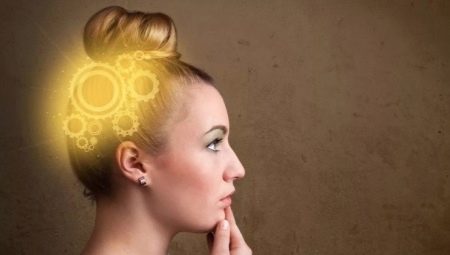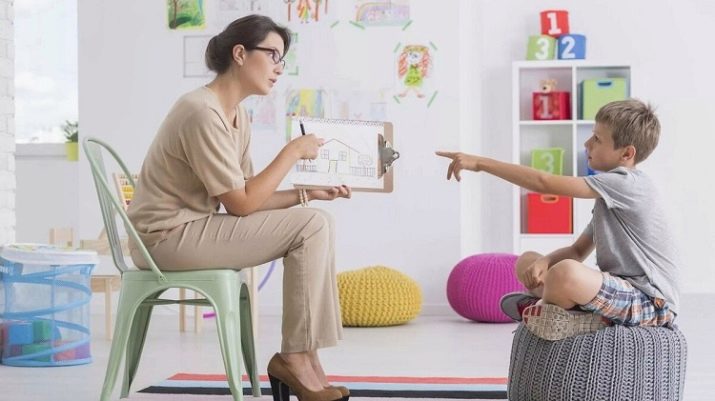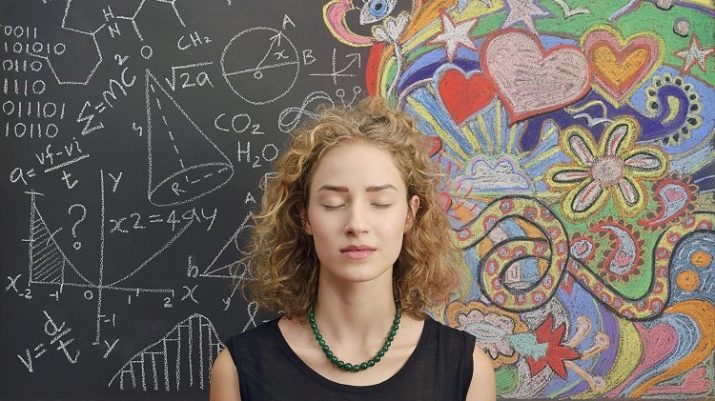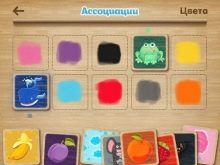Eidetic: features and methods

There is a unique technique for improving memory, attention and thinking in a person. With its help, it is easy to memorize the necessary information and enjoy the process. It's about eidetics.
What it is?
The word "eidos" in translation from Greek means "image". Eidetic is a technique for the development of figurative thinking. It is based on the ability of memory to retain and reproduce in small details the image of a certain object or phenomenon.
The development of memory, attention and imagination occurs through the involvement of all analyzers of a person.

Existing own internal experience contributes to the memorization of a new image, depending on the visual, auditory or kinesthetic modality:
- visual modality is due to memory associated with memorization, preservation and reproduction of visual images;
- auditory modality is provided by auditory memory associated with sounds stored in it;
- kinesthetic modality stores and actualizes various movements, touches, smells, and taste sensations.
In psychology, the phenomenon of figurative memorization was first described in 1907 by the Serbian scientist Viktor Urbancic. Extensive research in this area was carried out in the German school of Erik Jensch in 1933. Representatives of the Marburg school came to the conclusion that for preschoolers and primary schoolchildren, eidetism is a natural phenomenon.
The theory also interested Russian researchers. LS Vygotsky repeated the experiments of Erik Jensch in his laboratory. Research was continued by Sergei Rubinstein, Boris Teplov, Fedor Shemyakin, Alexander Luria, and others.in the USSR, work on the study of eidetics was discontinued due to the recognition of its racist and unscientific theory.
Now many psychologists and educators are showing scientific interest in the system of developing a special type of figurative memory, attention and imagination. The basic principles of the method and the techniques used were described in detail in his works by the doctor of pedagogical sciences I. Yu. Matyugin.

Benefit and harm
Eidetics is of great benefit to children who are able, using images, to easily memorize and develop their cognitive abilities. Instead of memorizing, they can quickly and efficiently assimilate new material. Learning foreign languages, memorizing formulas, multi-digit numbers, terms is facilitated. The process takes place in a joyful and positive tension of the child.
Eidetic helps to harmoniously develop both hemispheres of the baby's brain... It promotes concentration of attention, development of non-standard thinking and imagination, enhancement of imagination, and increased efficiency. Eidetic guarantees easy memorization of any information, while removing psychological stereotypes.
Failure to correctly evoke eidetic images can lead to serious consequences and cause significant harm. In psychology, cases of nervous overstrain are described with persistent attempts to evoke the necessary image.
It is necessary to correctly reproduce it and be able to timely get rid of an unnecessary image, mentally dissolve it.

Basic concepts
The eidetic is interesting in that in the absence of an object or phenomenon in the field of perception, a person feels it, smells and sees color. In psychology, there are concepts about the terms associated with this type of memorization.
Eidetism
The term means a kind of figurative memory, expressed in the preservation of vivid images of previously perceived objects in their absence. The tendency toward eideticism can be inherent in genetics or the characteristics of the brain. Scientists are sure that everyone has the makings, but due to various circumstances they are lost over the years. With age, it becomes difficult for most people to reproduce in detail tactile, visual or sound images.
Memory
Only 3% of the world's population is born with a phenomenal memory. Other people have the opportunity to develop thinking and memory with the help of eidetics. The phenomenon is often referred to as visual or photographic memory. The images are permanently imprinted in memory and at any time are scrolled like a video, with reproduction of the smallest details.

Image
A feature of eidetic images is the perception of objects in their absence. The stability, distinctness of the images stored in the memory remains for a long time. Having ceased to be the main form of memory processes, they remain in imagination and fantasy. At the same time, the basic psychological function changes.
Thinking
Synthesis, analysis, generalization, comparison in the processing of any information for people with eidetic thinking allow them to pay attention to small details and keep them in memory. In the future, they actively use the saved images.
Many eminent mathematicians have possessed this mindset. In the modern world, it comes in handy when working with information technology.

Imagination
Vivid imagination enables an individual to present clearly images that he never had to see. A person with an eidetic imagination can well imagine the breath of the wind, feel some kind of aroma, feel the coolness or feel someone's touch on the skin, as if it were happening in reality.
Methods
In psychology, there are many methods for the development of memory, figurative thinking, attention and imagination. A huge number of exercises have been developed for them. Acroverbal technique involves memorizing concepts with the help of interesting texts, rhymes and songs. The methods are used in teaching foreign languages to children. There are interesting poems for preschoolers.For example, when kids need to remember the days of the week. A fun game turns memorization into an involuntary process.
Mnemonics and eidotechnics are widely used.... The first technique includes methods related to the use of associative series, logical patterns, alphanumeric code. There are also less popular mnemonic methods of rational repetition and HPGC (orientation, reading, review, the main thing).
Effective in working with children chain method involving the use of associative links. The methodology for children involves performing exercises in a playful way. It is based on color, tactile, subject, sound, olfactory, gustatory, graphic, and free associations. Often, when developing the imagination of children, geometric shapes are used. During the development of associative thinking, the child must answer what he was thinking.
Eidetic exercises are used with children three years of age and older.


The correct organization of education motivates children to master new information.
- Color associations arise in a child at the moment of looking at a spot of a certain color... The kid must justify his answer. For example, looking at a red speck, someone imagined a ripe tomato. He answers something like this: "I thought about a red tomato, because it is already ripe." Another child remembered a red light. Some children imagined themselves on a walk with cheeks ruddy from frost.
- With the development of tactile memory, special cards with different textures are made.... Used fur, flannel, velor, leatherette surface, sandpaper. Use cards with sewn-on buttons, glued matches, pieces of wire or buckwheat. By touching the surface, the child must say what he was thinking. For example, touching buckwheat, the kid declares: “I thought about the river, because I walked barefoot over the pebbles. When you press hard with your fingers on the rump, it hurts as much as bare feet on the river bank. "
- Object associative series should cause different things: a piece of cloth or leather, thread, shell, coin, bump, button, sheet of paper, etc. For example, someone associates a piece of fleecy cloth with mowed grass on the lawn.
- Recorded noise or sound is used to develop auditory memory... They include an audio recording with the noise of a household appliance, natural sound, a piece of music or a street rumble and invite children to choose a suitable object in the pictures. For example, a child, listening to sudden braking of a car, says: "I thought about the door because it creaks when it is opened."
- For the development of olfactory memory, you need to stock up on boxes with a variety of flavors... They can contain various herbs, spices, empty bottles with the smell of perfume. Children are offered to sniff closed matchboxes. You need to find two with the same filling by smell. In addition, it is sometimes suggested to characterize the smell. Smelling closed boxes of coffee, a child can tell that he smells a fragrant, pleasant, invigorating smell.
- Taste associations are advised to use for older children... For their imagination, they are offered combinations of sweet and hot dishes, salty and cold. Sometimes tactile associations are added to the taste sensations: a crispy, juicy, liquid, solid product.
- Graphic associations are based on the transformation of a symbol into a specific object... For example, an incomprehensible squiggle turns into a fish hook. Older students use abstract symbols to memorize phone numbers.
- Free associations teach the kid to build connections on their own... The teacher, without using a subject image, reports that a mouse is sitting in the closet. Each child builds his own associative array. Someone replies: "I thought of a cat because she loves to hunt mice."Another kid says, "I thought of a wolf because it is as gray as a mouse."
The main thing in the game is the ability to justify your choice.



Eidotechnics has many interesting methods. In working with children, methods of revitalization, entry, transformation, figurative hooks, co-feeling, imaginative thinking, detachment, redundancy, regression, reincarnation, changed modalities, forgetting unnecessary information, echo, etc. are often used.
Let's take a look at some of them.
- Revitalization method effective when you need to remember a large number of names and historical dates. It promotes the development of visualization.
- Entry method makes it possible to get inside the presented story or picture. With the method of animation, the picture appears before the student's eyes, and with the method of entry, the student feels like a participant in the event. For example, a student in a biology lesson needs to remember the main features of living organisms. He imagines how he approaches his room and sees human lungs attached to the door, which with their vibration remind him of one of the signs of life - breathing.
At the threshold, his beloved dog gnaws a huge piece of meat, which informs about the second sign of life - nutrition. In the corner, a child notices a large pile of animal feces, indicating the ability of living organisms to excrete waste products. In another corner of the room sits a cat with kittens, reminiscent of the next sign of life - reproduction. And suddenly the cat rushed to its owner, thereby testifying that it can move. And the child remembers another sign of life: movement, mobility.
Looking at the windowsill, the student sees how, right before his eyes, a small cactus turns into a huge plant, completely covering the entire window space. He remembers another sign - growth. The development of a living organism is evidenced by the appearance of flowers on a cactus. The student may be reminded of metabolism by vitamins and glucose packages scattered around his desk.
Finally, the student sees the hands suddenly become covered with a rash. He understands that the allergic reaction has arisen due to the ability of a living organism to be irritable. In the lesson, when answering, it will be enough for the student to mentally enter his room in order to calmly, without straining, list all the signs of life.
- Transformation method makes it possible in the imagination to turn a flat image into a three-dimensional image, black and white - into color, small - into a huge one. This method is effective in memorizing hieroglyphs. It is enough to transform the hieroglyph in your thoughts once to remember it forever.
- Crochet hook method usually used when memorizing numbers. For example, you need to memorize the number 104. It is enough to imagine a knife that resembles a unit, stuck in a cutting board, on which next to it lies one egg, similar to zero. At some distance from it, on the board, you can see an onion cut into 4 parts.
The unit in imagination can be a pencil or a bolt. The deuce is represented as a swan or a pair of skis. A three of a kind can correspond to a wave or a flying seagull. The four resembles a lightning bolt or a rifle with a bayonet. The five can be represented as a five-pointed star or five fingers on the hand. A six looks like an open padlock or a cherry on a petiole.
The seven resembles an ax, poker or hoe. The eight is associated with the hourglass and the snowman. The number nine can be imagined as a balloon on a rope or a tadpole. A ring, a wheel, a ball, a puck, a plate, a full moon, a round plate, etc. This is how hooks are created in the imagination.
- The method of feeling makes it possible to feel an event with the help of the senses. For example, the presence of rain is remembered by the knock of drops on the glass or by the adhesion of wet clothes to the body.
You can memorize foreign words or numbers by representing the color, smell, taste, roughness, sound of the represented image.









